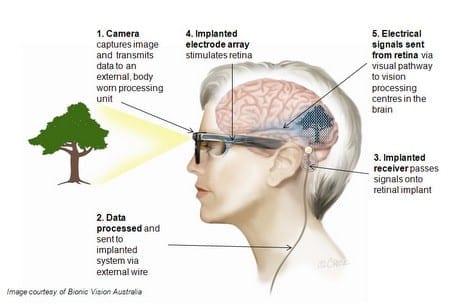The idea that paralyzed people might one day control their limbs just by thinking is no longer a Hollywood-style fantasy
In 2014 billions of viewers worldwide may remember the opening game of the World Cup in Brazil for more than just the goals scored by the Brazilian national team and the red cards given to its adversary. On that day my laboratory at Duke University, which specializes in developing technologies that allow electrical signals from the brain to control robotic limbs, plans to mark a milestone in overcoming paralysis.
If we succeed in meeting still formidable challenges, the first ceremonial kick of the World Cup game may be made by a paralyzed teenager, who, flanked by the two contending soccer teams, will saunter onto the pitch clad in a robotic body suit. This suit—or exoskeleton, as we call it—will envelop the teenager’s legs. His or her first steps onto the field will be controlled by motor signals originating in the kicker’s brain and transmitted wirelessly to a computer unit the size of a laptop in a backpack carried by our patient. This computer will be responsible for translating electrical brain signals into digital motor commands so that the exoskeleton can first stabilize the kicker’s body weight and then induce the robotic legs to begin the back-and-forth coordinated movements of a walk over the manicured grass. Then, on approaching the ball, the kicker will visualize placing a foot in contact with it. Three hundred milliseconds later brain signals will instruct the exoskeleton’s robotic foot to hook under the leather sphere, Brazilian style, and boot it aloft.
This scientific demonstration of a radically new technology, undertaken with collaborators in Europe and Brazil, will convey to a global audience of billions that brain control of machines has moved from lab demos and futuristic speculation to a new era in which tools capable of bringing mobility to patients incapacitated by injury or disease may become a reality. We are on our way, perhaps by the next decade, to technology that links the brain with mechanical, electronic or virtual machines. This development will restore mobility, not only to accident and war victims but also to patients with ALS (also known as Lou Gehrig’s disease), Parkinson’s and other disorders that disrupt motor behaviors that impede arm reaching, hand grasping, locomotion and speech production. Neuroprosthetic devices—or brain-machine interfaces—will also allow scientists to do much more than help the disabled. They will make it possible to explore the world in revolutionary ways by providing healthy human beings with the ability to augment their sensory and motor skills.
In this futuristic scenario, voluntary electrical brain waves, the biological alphabet that underlies human thinking, will maneuver large and small robots remotely, control airships from afar, and perhaps even allow the sharing of thoughts and sensations of one individual with another over what will become a collective brain-based network.
via Scientific American – Miguel A. L. Nicolelis
The Latest Streaming News: Artificial Limbs Controlled by Thoughts updated minute-by-minute
Bookmark this page and come back often
Latest NEWS
Latest VIDEO









